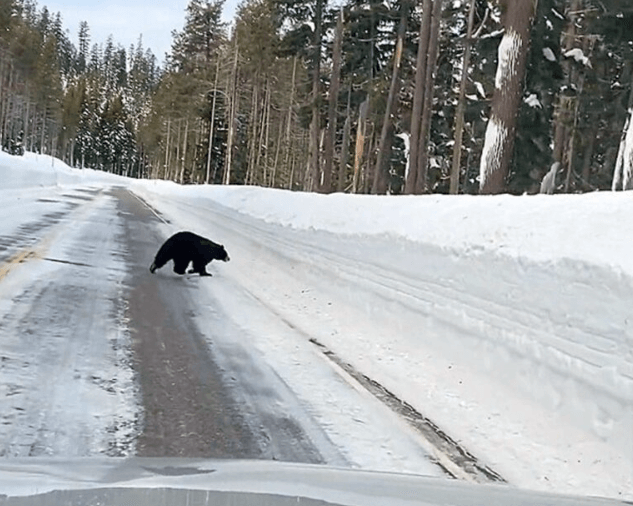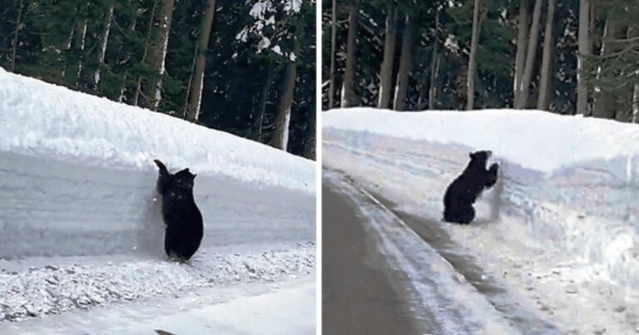While driving through Crater Lake National Park in southern Oregon, an outdoor tour guide spotted something extraordinary — a lone bear wandering along Highway 62, trapped between towering snowbanks.
At first, it looked like a lucky wildlife sighting. But the thrill quickly turned to concern when it became clear the bear was lost and panicking, searching frantically for a way back into the forest buried under fresh snow.
The driver slowed his car and began following at a safe distance, determined to keep other vehicles from startling or striking the bear. With every few steps, the animal veered left or right, trying again and again to climb the frozen walls on either side of the road. Each time he slipped back, exhausted, before trying again.
The bear’s fur was dusted in white, his paws struggling for traction. He’d dig, scramble, then slide down again. For several minutes, it was just man and bear, the sound of claws against ice echoing through the quiet park. The driver’s headlights cast a narrow path ahead, keeping the bear visible while giving him enough room to move.

The compassion behind the act was simple but powerful — he wanted to make sure the bear stayed safe until it found a way out. The guide later said he couldn’t just drive off and leave the animal alone in traffic. His only goal was to follow, protect, and let the bear choose its moment to escape.
After several failed climbs, the bear’s persistence finally paid off. Near a small housing complex, a narrow break in the snow appeared — a softer, sloped path leading back into the woods. The bear paused, sniffed the air, then lunged toward the gap. With one final push, he disappeared into the trees.
For a few seconds, the driver waited, scanning the shadows until he saw no movement. Then he smiled and drove on, relieved that the creature had made it home.
Moments like this remind us how fragile life on the edge of nature can be — and how small acts of awareness make a difference. One compassionate driver gave a frightened wild animal a fighting chance, and the bear’s relentless climb became a quiet symbol of resilience in the frozen wilderness.


